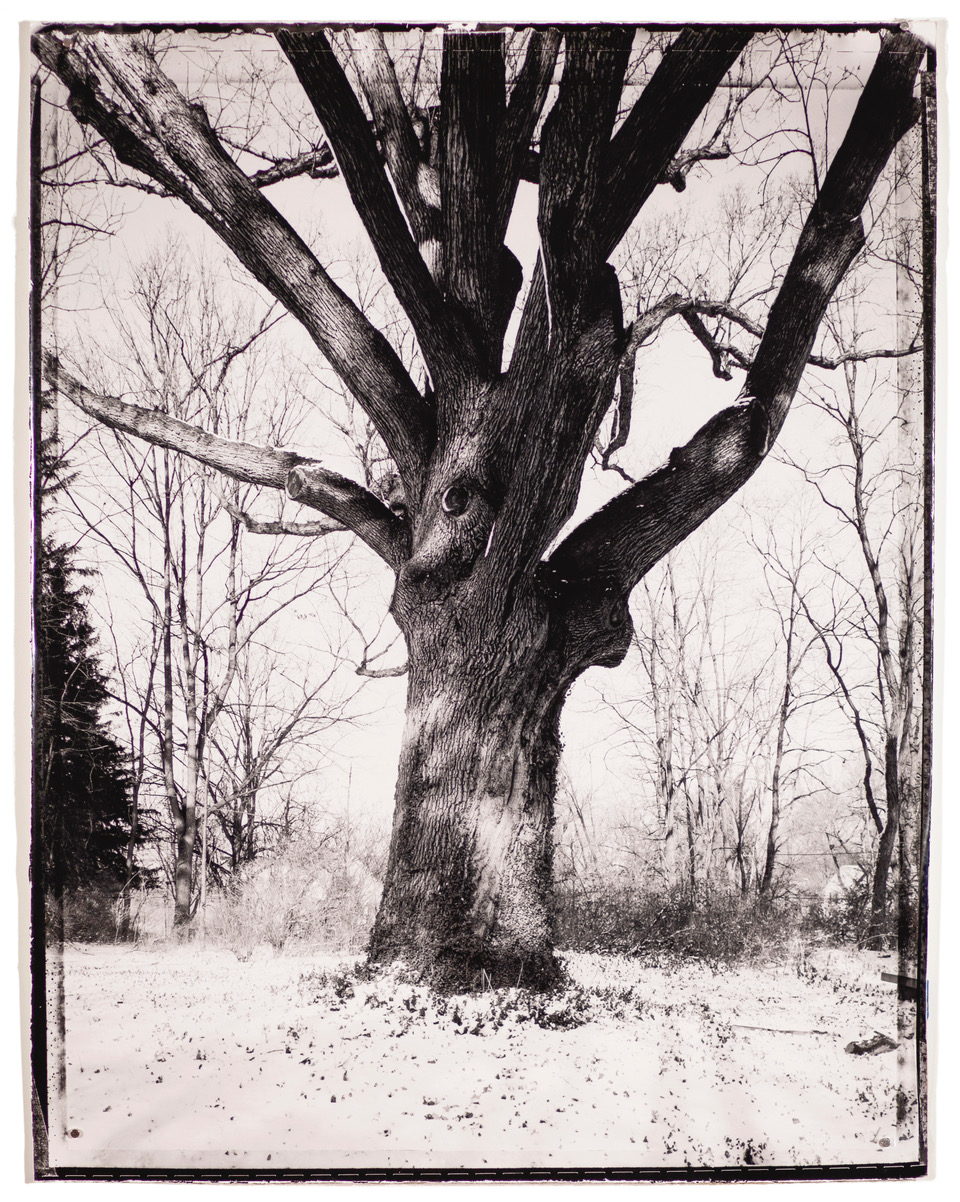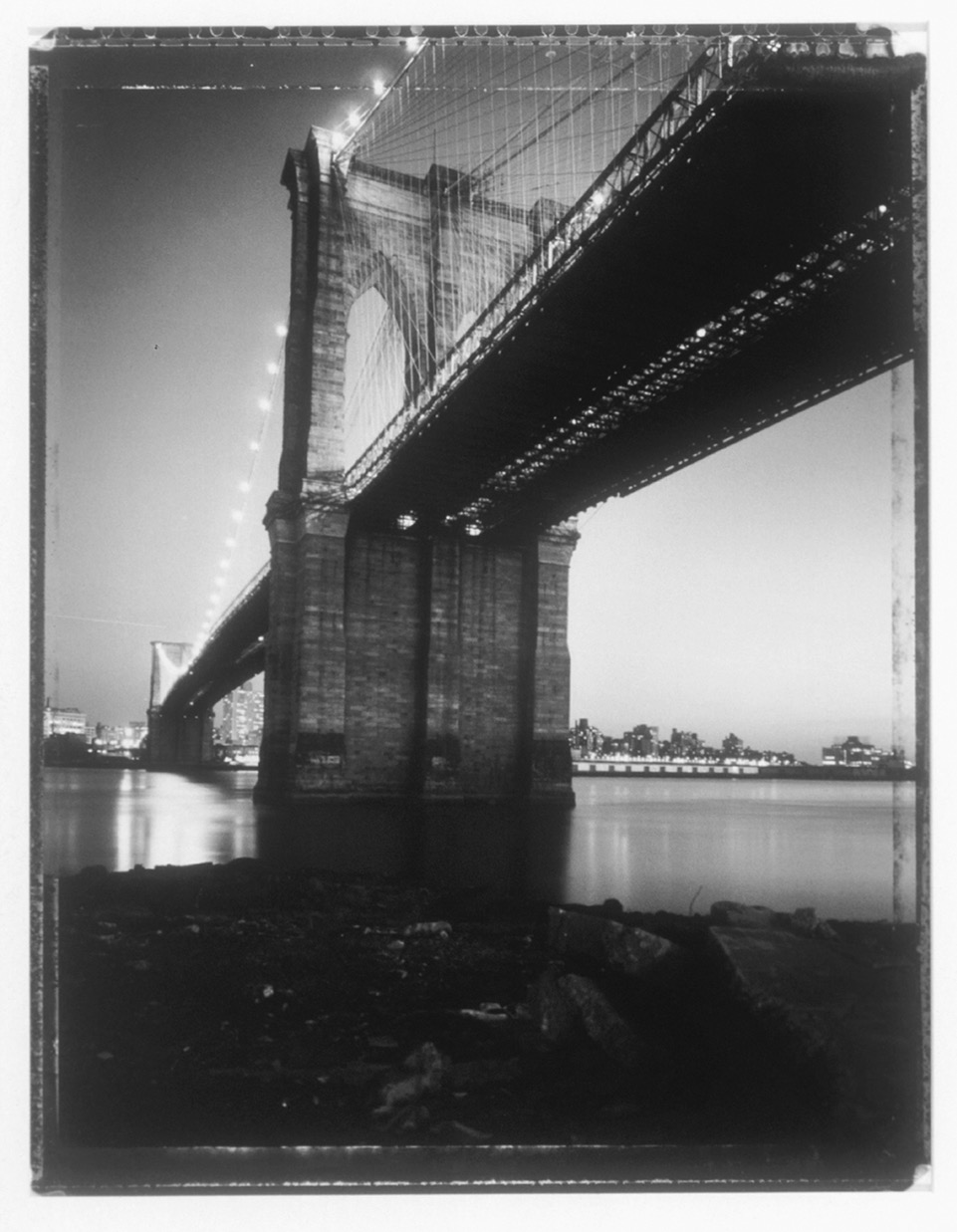Alumnus makes indelible mark on Rochester arts community
Left image by Richard Margolis, right by Sherry Phillips
On the right, Richard Margolis operates his camera as he makes a wintertime photograph of a weeping mulberry tree. The resulting diptych is on the left.
The Rochester arts community wouldn’t be the same without Richard Margolis ’78 MFA (graphic arts and photography).
Since moving to the area, his passionate support has propelled local arts to new heights.
When enrolling at RIT, Margolis was drawn to Rochester’s standing as the “center of photography” — a moniker he quickly added merit to with his own work and advocacy. For the last 32 years, Margolis has operated out of a photography studio in the Anderson Arts Building, home to a vibrant community of local artists and their studios.
It’s a fitting place for his practice given his seismic impact on the area’s development.
The Anderson Arts Building sits at the heart of what is known today as the Neighborhood of the Arts (NOTA), a downtown locale also encompassing the George Eastman Museum, Memorial Art Gallery, Village Gate Square and other art and cultural institutions.
Richard Margolis
During his career as an accomplished art and architectural photographer, Richard Margolis has captured countless marvels like "Anna," a post-war fishing boat beloved by residents of Cape Vincent, N.Y.
Margolis organized the first meetings that led to NOTA and the total transformation of the urban setting.
Margolis helped rally an engaged group of residents, creatives, businesspeople and activists to revive the area with a renewed focus on art studios and galleries, restaurants, bakeries and gift shops. Shuttered buildings and boarded-up houses made way for businesses, new housing opportunities and spaces that brought cultural stamina to NOTA, which is officially recognized by the city of Rochester.
He is also a founding member of ARTWalk.
“There are no vacancies in (the Anderson Arts Building). There haven’t been for a long time,” Margolis said. “And there are no boarded-up houses in the neighborhood anymore — and that’s due to the Neighborhood of the Arts. I take a little pride in being part of helping that along.”
Margolis is an accomplished art and architectural photographer, too. With a state-of-the-art darkroom in his studio, he achieves an unmatched level of detail through his analog process but also incorporates a digital workflow from time to time.
His studio walls are draped in his large-scale, black-and-white prints. Margolis considers each an object of art rather than photos he took. He gives them original qualities through printing — which is either done by him or longtime collaborator Paul Bergwall — and often frays the print edges with his own hands.
Richard Margolis
With Rochester being home to many large, historic trees, Margolis set out to photograph them. The project also took him to other cities, like New Orleans. A selection of this work was featured in his book, "Rochester Landmarks."
Margolis is energized by the challenge the meticulous, handmade process presents. And regardless of how long they’ve been on his studio walls, these objects don’t get dull.
“I still get excited when I look at them,” Margolis said. “I respond to them.”
Margolis grew interested in turning his camera on subjects that are “important but overlooked or taken for granted.” It led to teaming up with the Landmark Society of Western New York to publish Rochester Landmarks, a photographic catalog of architectural marvels, public art and historic, big trees in the area.
Margolis’ documentation of Rochester’s natural and structural wonders preserves and celebrates part of the area’s history.
Another of Margolis’ well-known projects was his elaborate photography of bridges in Rochester. His bridge photography also extended to famous locations such as the Brooklyn Bridge, Eiffel Tower and the Pont du Gard aqueduct in Southern France.
His latest project is “Living With Books,” a photographic survey of people’s reading nooks and the personal stories attached to them.
Richard Margolis
Margolis has captured the beauty of bridges around the world, including the Brooklyn Bridge.
Periodically, Margolis ushers new concepts into his work. A shift from shooting on 35-millimeter film to 2 1/4 square format and merging two separate prints into one framed object are examples of fresh ideas that have manifested in different projects.
“I’ve always tried to introduce a new element of some sort,” he said. “I’m terrified of being in a rut and just doing what I’m good at.”
Margolis correlates his willingness to implement new techniques with the evolution of photography itself.
“You can think about the history of photography by looking at the progression in the equipment and technology. But there was also a corresponding change in mental attitude, awareness and thought process,” he said. “And that's the part I most responded to. My photographs are the result of what I think about what I’m seeing and what I can do manually with a print in a darkroom.”
Margolis wasted no time immersing himself in Rochester’s photography oasis when he was at RIT. He worked as lab technician at the George Eastman Museum, a local gem that is the world’s oldest museum dedicated to photography.
Studying “the best photographs in the world” was a formative experience that shaped the direction of his career.
“Working there, hearing people talk about photographs that were way above my level helped me decide how to work and how to raise the standards of my own work,” Margolis said.
Alumni Profile: Photographer Richard Margolis '78 MFA
Art and architectural photographer Richard Margolis '78 MFA (graphic arts and photography) was integral in forming Rochester's Neighborhood of the Arts.

















